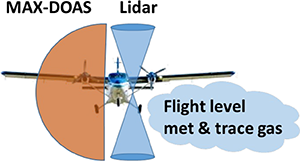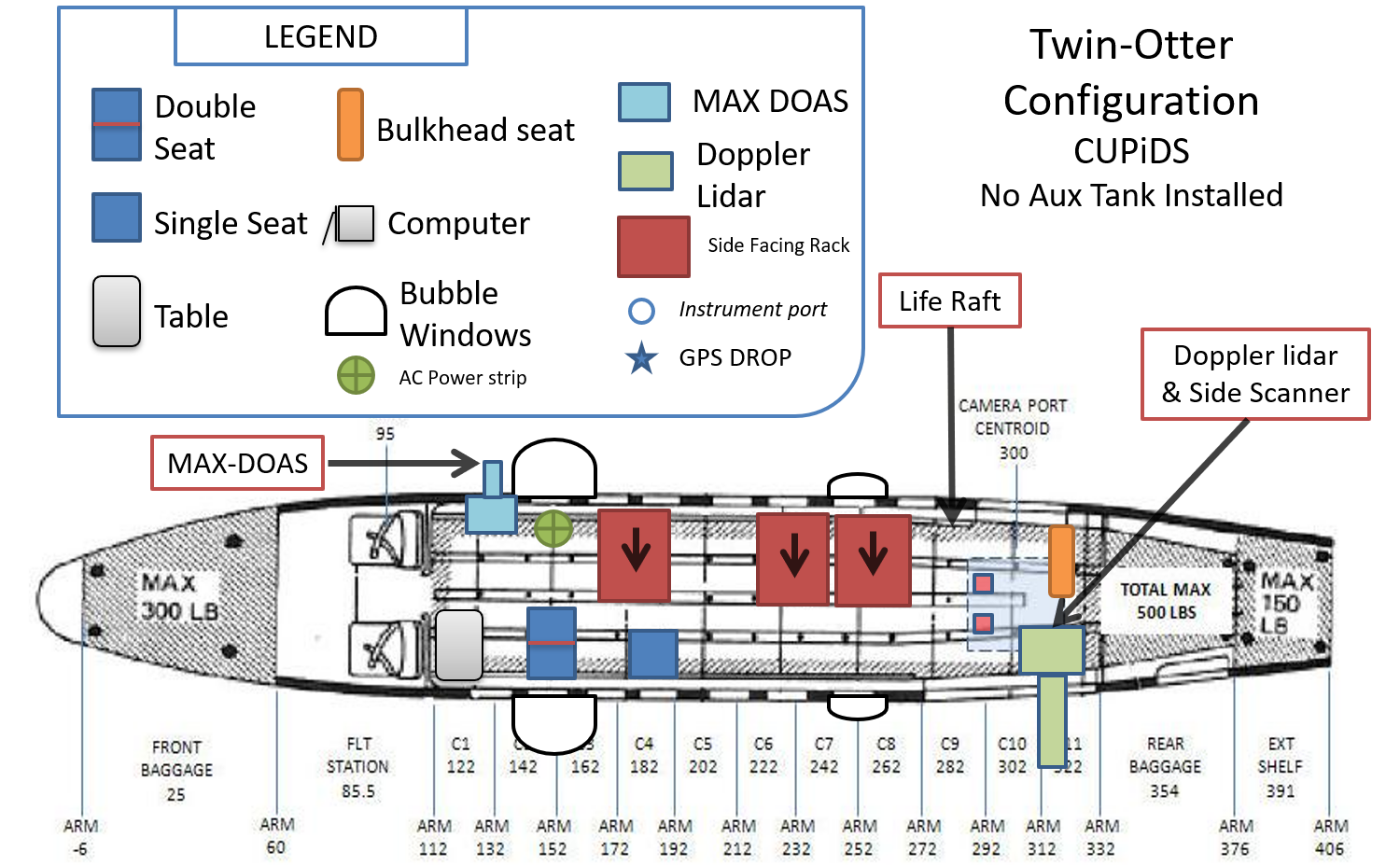A .gov website belongs to an official government organization in the United States.
A lock () or https:// means you've safely connected to the .gov website. Share sensitive information only on official, secure websites.

The primary NOAA Twin Otter measurement system will be the downward-pointing Micro-Doppler Lidar developed by NOAA CSL Atmospheric Remote Sensing program, which will measure winds and turbulent fluctuations with sufficient resolution (vertical and horizontal) to characterize variations in these quantities over regional/urban scales represented by air-quality models. Model performance will be evaluated by tracking the temporal and spatial evolution of pollutant plumes downwind of the major northeast-corridor urban centers. Airborne, in-situ, gas phase concentrations of CO, CO2, O3, H2O, CH4 will also be made on the NOAA Twin Otter to aid in air-mass identification and characterization of the spatial extent of the plume. The airborne wind and chemistry measurements will be augmented by those made by scanning ground-based Doppler lidars separately deployed to the area of study by other researchers, and by greenhouse-gas concentrations monitored by the NIST Greenhouse Gas Measurement Testbed and Mole Fraction Measurement Network – Northeast Corridor-Baltimore/Washington NEC/BW).

| Species Measured | Technique | Principle Investigator | Institution |
|---|---|---|---|
| Horizontal wind, turbulence and aerosol backscatter intensity profiles | Micro-pulse Scanning Doppler lidar | Alan Brewer, Amanda Makowiecki | NOAA CSL |
| Multi spectral irradiance | Multi channel radiometer | Alan Brewer | NOAA CSL |
| NO2, glyoxal, and HCHO column, and profiles | Airborne MAX-DOAS | Rainer Volkamer | CU Boulder |
| CO, CO2, CH4, H2O | Cavity Enhanced Absorption | Colm Sweeney | NOAA GML |
| NO, NO2, NOy, O3 | Cavity Ring Down | Steve Brown | NOAA CSL |
| Met package (P, T, RH) | AIMMS Probe | Alan Brewer | NOAA CSL |